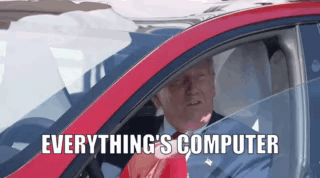hph6203 said:
You might be correct, but you also might be the guy in 1912 telling Henry Ford that it will take him 15+ years to sell his 2 millionth vehicle, because he had only sold 150,000 vehicles in the last 4 years, not recognizing that for the first 4 years he had been developing the moving assembly line manufacturing process and in actuality it only took him just over 4 years to sell the 2 millionth vehicle.
Quick clarification...
Ford didn't really develop the moving assembly line for manufacturing. What he developed were the jigs and processes to manufacturer parts consistent enough to make it possible. Plenty of people had the idea before him, but it was unworkable due to the variation in manufactured parts. Cars were basically hand built up to that point because parts had to be individually for to each other. Ford introduced jigs and other processes so that parts could easily be brought within tolerance and mate to any other part quickly and easily. Only then could the assembly line work.
That said, these are 2 completely different problems. Ford's issue was finding a way to quickly and consistently repeat a finite and relatively small set of operations. That problem had a boundary. Tesla's issue is how to teach a car to drive under all conditions and in all situations. That's an unbounded problem. You could look at Ford's production and point to specific parts of the production process that would need to be optimized and by how much to reach a production rate at a target cost to sell 2 million vehicles. With Tesla, there are potentially limitless edge cases that can't be known until they're encountered.
Consider the traveling salesman problem. A salesman has to travel to different cities in his territory. He wants to choose the shortest overall path to minimize time on the road and only visit each city once. Sounds easy enough, and smoking it is easy until you start adding more cities. You quickly get to a point where checking all of the possible solutions would take longer than the life of the universe, so you have to start using strategies to
approximate the solution. While there are some really good approximation, there is no known general solution that will allow you to find the optimal path for any n number of cities, despite some of greatest minds in the history of mathematics trying. There were even some very smart people who thought that computers would finally be able to help solve the problem and an we needed was more computational power to tackle the problem, but that's never happened.
This is the territory Tesla is in. They need a general solution to a nearly endless problem. Maintaining a lane, stopping in traffic, changing lanes, waiting for a green light, recognizing a stop sign, etc are all relatively simple special cases that represent the well bound, small version of the problem. When you start adding in understanding construction signs, estimating potential collisions with obstacles, classifying obstacles, predicting the behavior of other vehicles or pedestrians, operating in low visibility or slick conditions, flat tire/blowout, atypical intersections, etc you quickly get to a point where there is too much and you must now approximate solutions. Maybe 90% of driving is those low hanging special cases, so it seems super close after getting them, but the other 10% is an explosion of endless edge cases. You could solve 99% of the problem and the remaining 1% could still represent decades of work.
To address same other points...
Yeah they launched the robotaxi service, but there were (and I believe still are) a lot of bugs in it. Austin and San Francisco also have highly mapped streets. You don't have that everywhere. There's still a safety driver in the car for a reason.
Faster and better computers have always been the proposed solution to lots of problems. They very rarely are. Some problems are simply intractable. I think this may be one of them. FSD may end up working like autopilot in aircraft. There are a lot of things that pilots have to know and do, but between takeoff and landing autopilot can do the majority. Yes, autopilot systems can often handle takeoff and landing too, but that's usually with a lot of ground systems like an ILS or by using GPS with mapped and stored airports. I don't know of any that could land on a dirt airstrip, make an emergency landing, or handle any of the complex scenarios a human pilot is trained for. That said, pilots are always in the cockpit and trained to be constantly ready in case they need to take over. Your typical driver if given FSD would fall asleep on the backseat or get on their phone and be completely oblivious.



